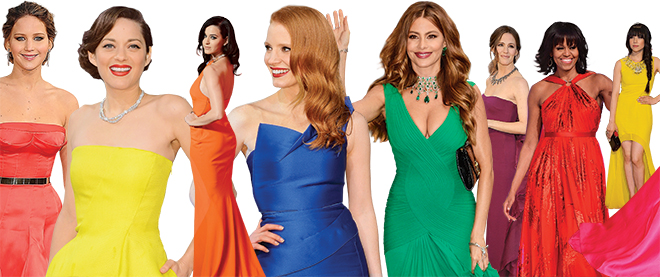Backlash against basic black
Jennifer Lawrence in coral, Sofia Vergara in emerald and the First Lady wears red
Getty Images / CP
Share

We saw Jennifer Lawrence in warm coral, Sofia Vergara in jewel tones. Jane Fonda wowed in taxi-cab yellow, Lena Dunham in eggplant. Nicki Minaj grabbed the spotlight in Piet Mondrian colour-blocking, Gwyneth Paltrow in a vibrant Erdem print. But the one shade we didn’t see much on this year’s red carpets was fashion’s traditional go-to hue: basic black. Even Jennifer Aniston, long mocked for her boring loyalty to the little black dress, wore bright red to the Oscars.
Chalk it up to an “anything but black movement,” or ABB. Suddenly, black is death, an indicator of an unimaginative stylist or—horrors—no stylist at all.
[mlp_gallery ID=248]
Black’s banishment is surprising only in how long it took. You don’t have to have read colour theorist Josef Albers to understand colour’s powerful ability to attract the eye. It pops. It makes its wearer stand out—exactly the effect celebrities want when competing in their natural habitat. ABB showcases the survival of the fittest, literally.
Black is famously slimming; to shun it, you need to be in shape. Colour also demands quality craftsmanship: every detail is emphasized. Black can be harsh; colour is kinder. It’s also more optimistic, which is why “blacklash” dovetails with a culture in thrall to happiness. A Fisher-Price palette is the perfect way to signal child-like vitality and ego. “Me,” it says. “Look at me.”